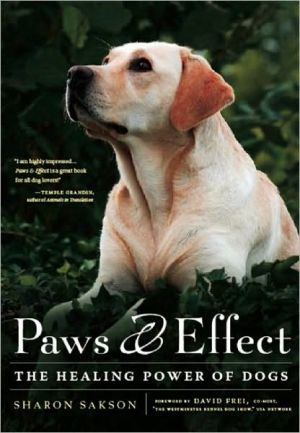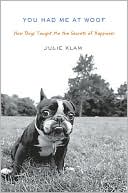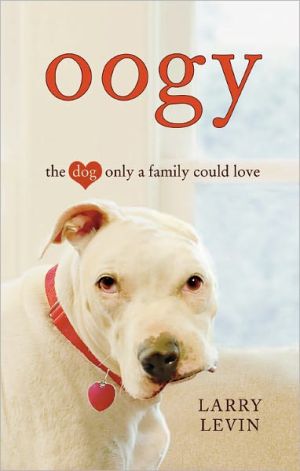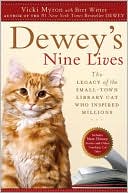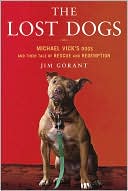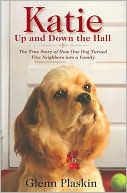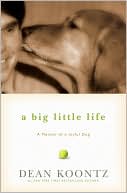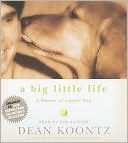Paws & Effect: The Healing Power of Dogs
“I am highly impressed. . . . Paws and Effect is a great book for all dog lovers!”—Temple Grandin, author of Animals in Translation\ “So meaningful and straight to the heart, Paws & Effect sheds a whole new light on our communication with animals of which many people are unaware. You may listen more closely the next time your dog tries to tell you something!” – Betty White, actress, author\ Dogs have always helped humans and changed our lives for the better—by herding sheep, guarding our...
Search in google:
Stories that explore how the bond between dog and human works healing miracles in human lives. Miriam Tuliao - Library Journal As with her first book, Paws and Reflect: A Special Bond Between Man and Dog(coauthored with Neil Plakcy), Sakson here turns her attention to the meaningful human-canine relationship and thoughtfully illustrates the therapeutic value of dogs. She offers intriguing snippets of information about dog domestication, the evolution of ancient and modern breeds, canine behavior, and animal-assisted therapy. Drawing on incidents from her personal life and the collected testimonies of therapists, war veterans, disabilities advocates, and patients coping with life-threatening or chronic diseases, she shows several examples of successful human-canine partnerships. Sakson profiles earnest, hardworking dogs that offer their owners unwavering companionship, therapeutic support, and a raison d'être. Although her thesis is hardly groundbreaking, her thoroughly readable stories are largely inspiring and warmly told, and they persuasively point to the depth of the human-dog bond. An appendix with FAQs (on service animals in places of business) and a list of suggested web sites complete the book. Recommended for public library pet collections.
Paws & Effect\ The Healing Power of Dogs \ \ By Sharon Sakson \ Spiegel & Grau\ Copyright © 2009 Sharon Sakson\ All right reserved.\ ISBN: 9780385528566 \ \ \ Chapter One\ \ \ Living with Healing Dogs\ \ \ When I trace back my interest in the healing power of dogs, I have to start at the beginning, which takes me back to age twelve. In that year, my mother took to bed with an unexplained illness. Because I was in seventh grade, breezy, confident, and wise, I assumed she had a lingering case of flu and sighed with annoyance whenever she asked me to look after my three younger siblings.\ \ Our relatives and friends said, "Your mother will be better soon," and I believed them, the way a child would. Instead, over the next months, the situation deteriorated. There were fewer and fewer days when my mother felt well enough to get up and help us with homework. Finally, one warm May afternoon, we arrived home to the sight of an ambulance in the driveway, and just beyond it, parked askew, our father's car.\ \ My brother, Johnny, and I ran into our house, where we saw the even stranger sight of our father descending the staircase, carrying our mother.\ \ He had never carried her before. He often complained that she was too heavy, that her clothes were too tight, that if firemen ever came to our house to rescue us, they wouldn't be able to get her out. It wasn't true; she was a petite 5 foot, 1 inch and 105 pounds. He amusedhimself by playing on her anxieties about how she looked. Yet now here he was, carrying her in his arms. She looked frail and small. He laid her on the gurney and the ambulance workers strapped her in.\ \ Our father told us she was going to the hospital because she needed more treatment and it would be better for her to get it there. She would get better in the hospital, and then she would come home. He sounded very certain, so we were reassured.\ \ It was a confusing time. In an excess of sympathy and caring, no one wanted her children to know that she was dying. Instead, they continuously tried to cheer us up. Their strategies worked because we had been trained to believe what adults said.\ \ The next day, our maternal grandmother, Kay, took us to Robert's Pet Shop, on a corner of Warren Avenue near her apartment in Trenton, New Jersey. We needed food for Johnny's two turtles and some pebbles and a fancy castle for Sandy's goldfish. My pet had been a dog, a mutt named Shadow who resembled a black Golden Retriever. He was born in the stable where I took riding lessons, and while we loved him, he developed a troubling habit of attacking the men who did the gardening for the homes on our block. Our yard was not fenced. Shadow stayed near us, watching baseball or jump rope or hide-and-seek with one eye while he warmed himself in the sun. But the minute a gardener appeared in any of the adjoining yards, he flew off the property and not only barked but sank his teeth into the legs of any of the men he could get near.\ \ We knew why. When he was only a year old, he had followed us across the Robinettes' lawn and onto the Mersons' property, where we took a path toward the back alley and planned to proceed to the home of the Hughes' children. We were a long stream of neighborhood kids. A gardener appeared in the door of the Mersons' garage, a hoe in his hand. With no provocation at all, he stepped out and smacked Shadow in the head. Shadow fell to the ground, unconscious. I was hysterical; Johnny thought he was dead; one of the Hughes boys, Brian, picked up Shadow and carried him back to our house. Shadow recovered, but he never forgot. From that moment on, he hated all gardeners. This event changed him from a calm, compliant dog to a dog who became a threatening monster on the several days a week gardeners were present. We were supposed to keep him in the house in the afternoon. We never remembered. Eventually, Mommy explained to us that Shadow was going to have to go out to the country and live at our grandparents' farm, where hopefully he would never see another gardener again.\ \ In the cool glow from Robert's lighted aquariums, I exhumed a copy of Dog World magazine from a book rack. A Wire Fox Terrier graced the cover, and his beauty and stature took my breath away. Turning the pages, I fell totally under the spell of purebred dogs. Pointers and Chesapeake Bay Retrievers, Greyhounds and Bassets, Bernese Mountain Dogs and Great Danes and Chihuahuas and Collies and Corgis. All these dogs amazed and enchanted me. With this magazine in hand, I was able to put aside the thought of our mother, hooked to oxygen and intravenous fluids in the hospital, and think about something else. In that split second in the pet shop, a future opened before me that I had not contemplated, a future filled with beautiful dogs. I would be the one holding the well-groomed Standard Poodle on the thin show lead, smiling as we accepted the Best in Show trophy.\ \ My father was cold, distant, and preoccupied, but he was roused by my insistent prodding to drive us to Merrybrook Kennels in Long Valley, New Jersey, where I chose a Wire Fox terrier with the guidance of the great breeder Mrs. Franklin Koehler. I didn't know it at the time, but she was a pillar in the breed and would become my first mentor. It was amazing that my father, so cheap in many ways, agreed to shell out the whopping $350 price of a purebred dog. He was not inclined to be so generous when it came to Dolly's housing arrangements. He put up a makeshift fence that he assumed would hold an active, eager terrier puppy during the hours I was at school. He was wrong. Dolly escaped, and only two weeks into our partnership, she was struck and killed by a car.\ \ While I was interviewing men for my book Paws & Reflect, several of them mentioned that they saw the deaths of their childhood dogs as lessons in the impermanence of physical life and the permeating quality of love. If Dolly's death was supposed to be a lesson for me, I missed it. I was already depressed about my mother's absence. When Dolly died, I took to bed and was unable to get up. My father returned to Mrs. Koehler for a second puppy, Bonnie, who was granted permission to stay in the house when I wasn't with her in order to avoid the fate of her predecessor.\ \ If someone asked me now which breed would be best at consoling a child over the loss of her mother, a Wire Fox Terrier would be low on my list. Bonnie did not like to sit still. She would absorb only a few minutes of hugs and kisses before demanding to be set free. She was always busy chasing small animals or barking at passersby. Like most terriers, she abstained from making direct eye contact. But when my mother died, Bonnie was the only physical being who offered me any kind of comfort. She didn't lower her standards because of my grief and allow me more cuddle time. She just made it clear that she didn't see the point. There was a big world out there to explore. When the leash was snapped to her collar, we walked endlessly through Cadwalder Park. Down to the freezing cold creek where she lapped a drink while I hopped from rock to rock. Across to the playground, where she refused to ride the swings or the wheel but let me push her down the sliding board. Into the bushes behind Kathy McCormack's house, where we spied on my best friend and her family.\ \ In the weeks after my mother's death, no one noticed us passing through the house like ghosts. Everyone was consumed inside by his or her own grief. I wanted to shut the door of my bedroom and never come out again, but I couldn't do that because of Bonnie. She felt like my heart, the only part of me that carried on. She was unfailingly lively, cute, sweet, and beautiful in my eyes. I had to carry on with my life because she did.\ \ The black depression of my mother's death settled over me like a cloud and many, many nights I decided that the only way out was to die. I spent a lot of time considering various methods of suicide. Would the gun in my father's bedroom closet go off if I put it to my head? How many Valium pills would you have to consume to make sure you died and didn't just turn into a vegetable? What about jumping off the roof of the house? The problem with all the methods was the absence of a guarantee that they would work. And there was one lingering detail: There would be no one to take care of Bonnie. No one in the family felt about her the way I did. There is a dose of genetic material that separates a dog lover from a non-dog lover and no amount of explaining can ever cross the divide. Bonnie was the sole reason I never pressed the razor blade to my wrists or dropped in front of a speeding train. She needed me when no one else did.\ \ It was not apparent to me then that I was witnessing the healing power that a dog can bring to a person's life. If I thought about it at all, it was the other way around. I was devoting my life to make her happy. It took the distance of adulthood to see the truth; Bonnie kept me on this earth. She didn't heal me, but she provided the possibility that I would still be alive to be healed some day. Her presence was the antidote that defused the pain of petty insults from other children and all the times I was forgotten by my father. She comforted me with her wild spirit, but often it was her physical nearness I craved. My father was proud of his German heritage. He aligned himself with the concept of Prussian military toughness. When people feel sympathy, they like to take your hand, squeeze your shoulder, and stroke your arm. My father despised all of those things. His co-workers, the doctors and nurses and physical therapists and lab technicians, even the telephone operators and television repairmen and girls who delivered the flowers; all of them would have known about the death of his wife and want to offer sympathy. It was probably hard enough to say 'Thank you' and push the grief away all day. He did not want to be confronted with it in the evenings, in his own home. He rebuffed any attempt to touch or hug me. The healing power of another being pressed against your skin came only from Bonnie.\ \ We moved to a sterile new home in Pennsylvania, and I enrolled in a strange new school where sports stars and cheerleaders were the only honored students. All others walked in their shadows.\ My father let me get a second dog. Woody was another Wire Fox Terrier, a show dog who had grown just a little too big for the ring. Bonnie joyously welcomed the presence of another of her species. Gram decided to buy me a Saint Bernard, a generous gesture on her part. She had always loved the breed.\ \ These three dogs greeted me every day with wagging tails and kissing tongues. They loved me enthusiastically and didn't care at all about the heavy grief I carried around inside.\ \ Trenton had one of the largest and grandest dog shows in the country. On the grounds of the Lawrenceville Armory, I walked past elegant Greyhounds, highly brushed Collies, yapping Chihuahuas, funny Dachshunds, and felt strangely at home.\ \ My father had no feeling for dogs. He protested that he liked them, but what he liked was a vision of a robotically obedient dog confined behind a fence. He didn't like interaction with animals. I liked dogs with soft noses and pleading eyes. I liked their mischievousness and their willingness to submit. I liked training dogs and helping them figure things out. I liked hugging them and snuggling with them. I liked their clarity. If they loved you, they gave you everything. When they were unhappy, they lay in a corner. They never held a grudge nor dwelt on past mistakes. They didn't pretend to like you; they either liked you or they didn't. There was no gray area. Everything was the present. Their lives were both pure and simple.\ \ When you say you owe your life to your dogs, people assume you are speaking rhetorically. But I'm not. For me, it's a fact.\ \ In the past fifteen years, scientists the world over have established beyond doubt the therapeutic value of dogs. An American study of ninety-two patients hospitalized in coronary care units for angina or heart attack found that those who owned pets were more likely to be alive a year later than those who did not. Twenty-eight percent of those who did not own pets died during that time. Only 6 percent of patients who owned pets died within a year. They must have felt as I did, that taking care of your pet is an important responsibility. You can't count on anyone else to do it. You've got to show up every day.\ \ Researchers at University of California-Davis documented that people with pets were approached more often for conversation than when they were alone; blind and wheelchair-bound children with their guide dogs in public places were approached for social contact ten times more frequently than when they were without their dogs.\ \ In England, Cambridge researchers discovered that within a month of taking a cat or dog into their home, new owners reported a highly significant reduction in minor ailments. At Warwick University, a study found that people who were poor at making friends, confiding in others, and showing love were able to lavish affection on a pet.\ \ A Japanese Animal Hospital Association study of people over sixty-five found that pet owners made 30 percent fewer visits to doctors than those who had no pet.\ \ At the Baker Medical Research Institute in Melbourne, Australia, a study of some 6,000 patients revealed that those with pets had lower blood pressure, a lower cholesterol level, and as a result, a diminished risk of heart attack.\ \ Experts say that at least part of the reason is that dogs help us reduce our state of arousal, which reduces blood pressure. They do that partly just by their steady presence. We can also use our dogs to fulfill a primitive and basic need, the need to touch. Touch is comforting to babies; they can be crying with distress one minute, but quiet and settled when they are held. Adults feel the same way, but often don't want to admit it. Human relationships are sometimes too complicated to let us touch and hold another person. But your dog is always available for this job.\ \ Children with mental or physical disabilities have an especially strong bond with animals. Children who have trouble walking make astonishing efforts to maintain their balance so they can play with a dog. Those whose heads loll uncontrollably from side to side work to maintain eye contact.\ \ Some prisons encourage inmates to keep dogs as pets, because they bring about long-term changes in attitudes and behavior. With dogs in their lives, some prisoners find out for the first time what it's like to give and receive affection.\ \ That's the power of the human-canine bond. Although it feels unique to every person who experiences it, it's a bond that was forged many, many centuries ago. \ \ Continues... \ \ \ \ Excerpted from Paws & Effect by Sharon Sakson Copyright © 2009 by Sharon Sakson. Excerpted by permission.\ All rights reserved. No part of this excerpt may be reproduced or reprinted without permission in writing from the publisher.\ Excerpts are provided by Dial-A-Book Inc. solely for the personal use of visitors to this web site. \ \
Foreword xvIntroduction xix1 Living with Healing Dogs 12 The Healing Power of Early Dogs 103 The Patron Saint of Dogs 184 The Warm Touch of the Xolo 265 The Healing Power of Kyle 386 The Healing Power of Whippets 507 Pets Are Wonderful Support 628 Bonnie Bergin and the Amazing Power of Dogs 799 Big Dog in Troubled Places 9710 My Puppy, Your Independence 10611 Angel On A Leash 11712 The Woman Who Smelled Like Cancer 14013 If You're Sick, I'll Let You Know 15614 An Army of Two 17915 When the Dogs Go Marching In 207Afterword 217Acknowledgments 227Appendix: To Find Out More 231Bibliography 235Index 241
\ Library JournalAs with her first book, Paws and Reflect: A Special Bond Between Man and Dog(coauthored with Neil Plakcy), Sakson here turns her attention to the meaningful human-canine relationship and thoughtfully illustrates the therapeutic value of dogs. She offers intriguing snippets of information about dog domestication, the evolution of ancient and modern breeds, canine behavior, and animal-assisted therapy. Drawing on incidents from her personal life and the collected testimonies of therapists, war veterans, disabilities advocates, and patients coping with life-threatening or chronic diseases, she shows several examples of successful human-canine partnerships. Sakson profiles earnest, hardworking dogs that offer their owners unwavering companionship, therapeutic support, and a raison d'être. Although her thesis is hardly groundbreaking, her thoroughly readable stories are largely inspiring and warmly told, and they persuasively point to the depth of the human-dog bond. An appendix with FAQs (on service animals in places of business) and a list of suggested web sites complete the book. Recommended for public library pet collections.\ —Miriam Tuliao\ \ \
